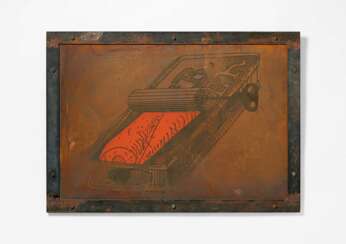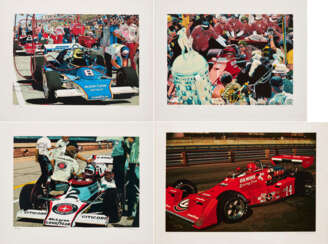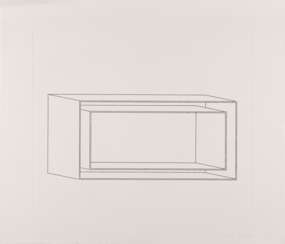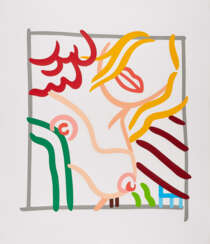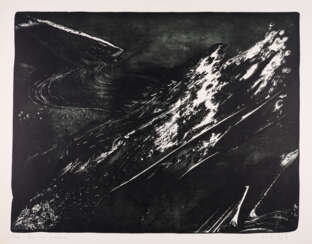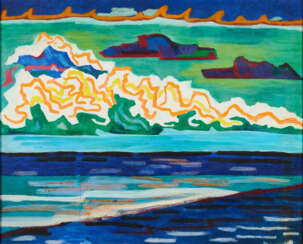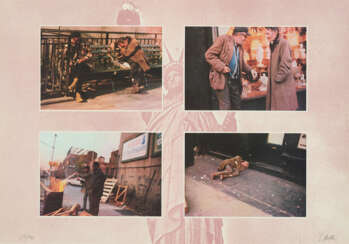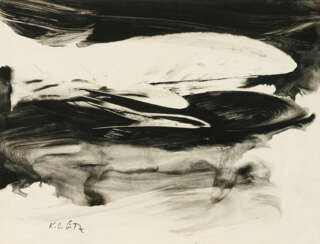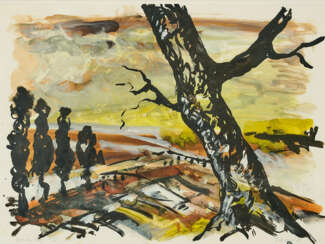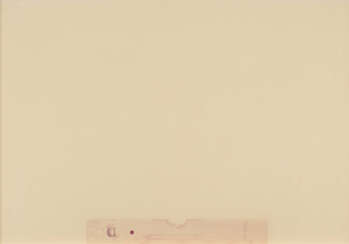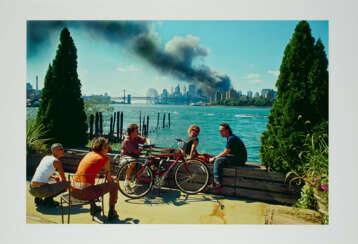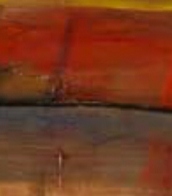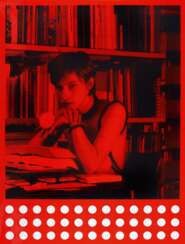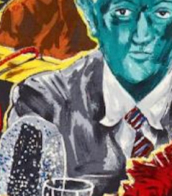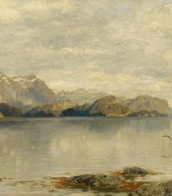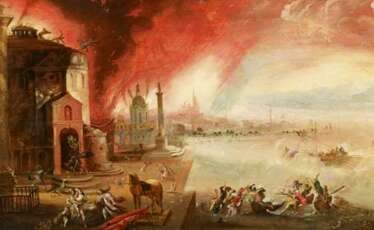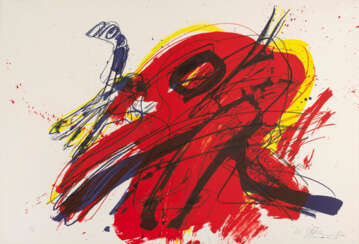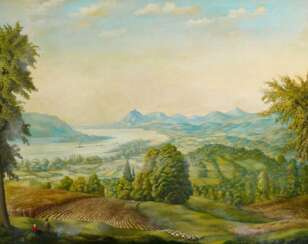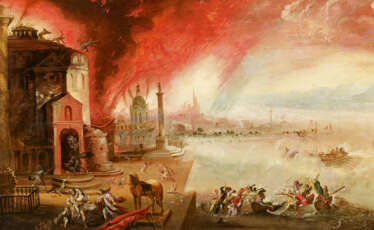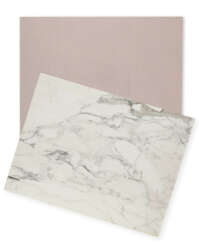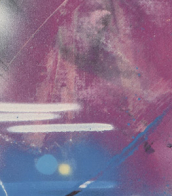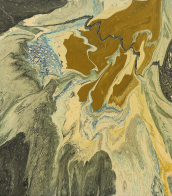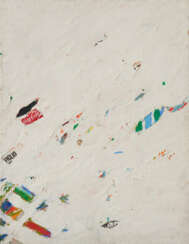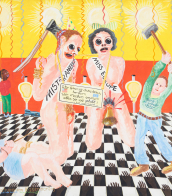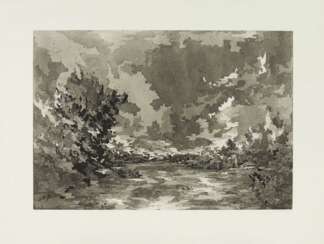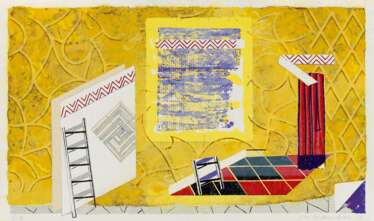5 x 89cm)
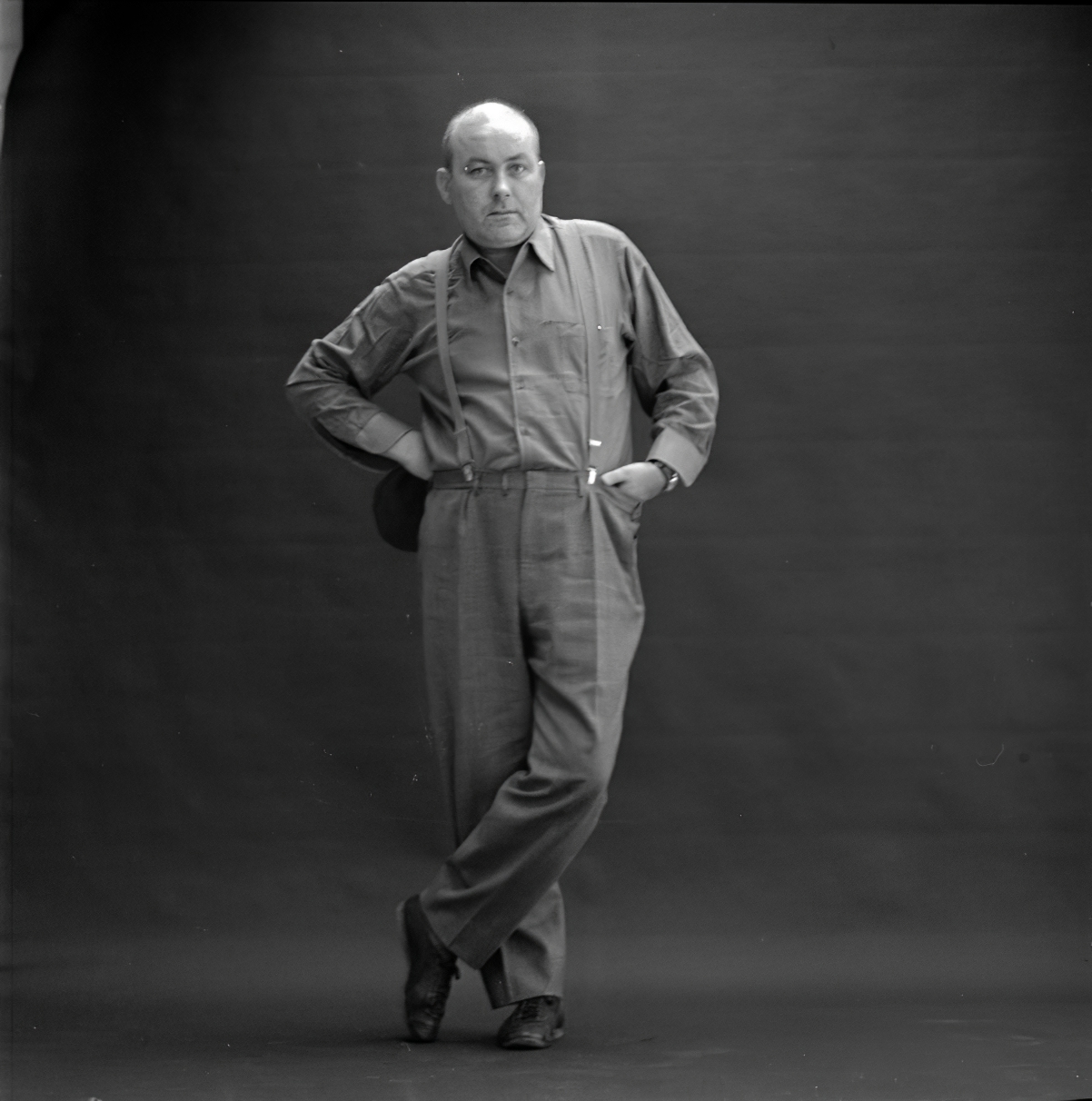
Karl-Dietrich Roth was a Swiss artist best known for his artist's books, editioned prints, sculptures, and works made of found materials, including rotting food stuffs.
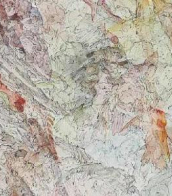

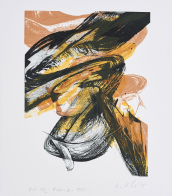

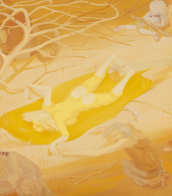
Donald Clarence Judd was an American artist associated with minimalism (a term he nonetheless stridently disavowed). In his work, Judd sought autonomy and clarity for the constructed object and the space created by it, ultimately achieving a rigorously democratic presentation without compositional hierarchy. He is generally considered the leading international exponent of "minimalism," and its most important theoretician through such writings as "Specific Objects" (1964). Judd voiced his unorthodox perception of minimalism in Arts Yearbook 8, where he says, "The new three dimensional work doesn't constitute a movement, school, or style. The common aspects are too general and too little common to define a movement. The differences are greater than the similarities."
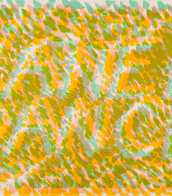
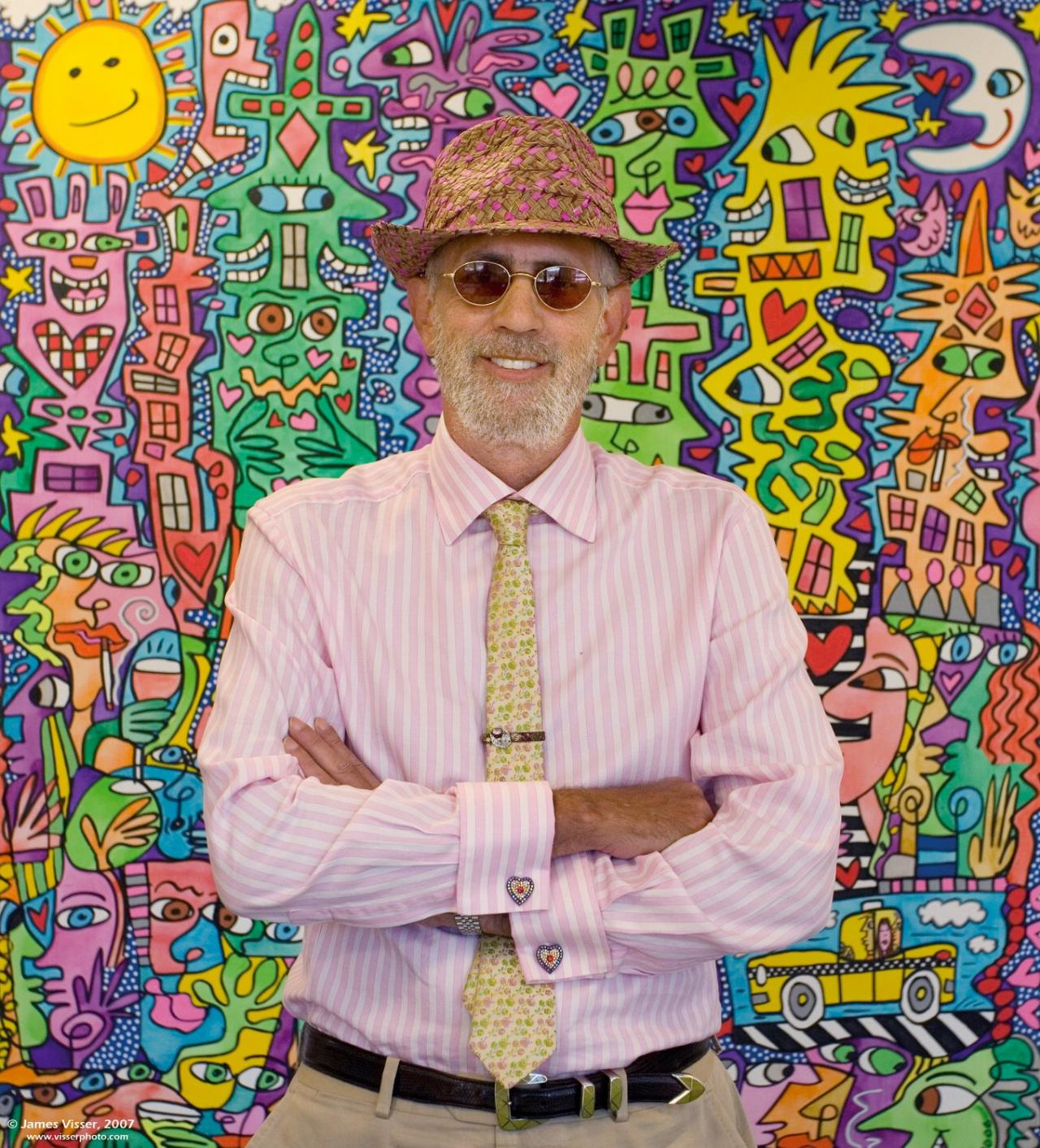
James Rizzi was a renowned American artist, celebrated for his vibrant and playful Pop Art style. Born in Brooklyn, New York, Rizzi's unique approach to art combined childlike whimsy with bold, animated creations. His 3D artworks, characterized by their intricate detail and lively city scenes, set him apart in the art world.
James Rizzi's artistic journey was marked by a series of notable achievements and contributions. He gained recognition in the late 1970s and early 1980s, showcasing his works at prestigious venues like the Brooklyn Museum and creating album covers and animations for the Tom Tom Club. His style evolved into creating 3D constructions, where he meticulously sketched scenes, added vibrant colors, and transformed them into three-dimensional art pieces. This method resulted in captivating prints that exuded a sense of movement and playfulness, drawing viewers into the energetic and diverse atmosphere of New York City.
Throughout his career, James Rizzi undertook various notable projects, including designing for the Montreux Jazz Festival, the FIFA World Cup, and the Olympics. His works were not only limited to canvases but also extended to designing cars for Volkswagen and contributing to charity projects. The "Happy Rizzi House" in Braunschweig, Germany, stands as a testament to his architectural creativity.
Art enthusiasts and collectors will find James Rizzi's work particularly intriguing due to his unique process and the joyous portrayal of urban life. His art is celebrated globally, and his influence remains significant in the Pop Art movement.
If you are a collector or an expert in art and antiques, and James Rizzi's work intrigues you, sign up for updates. Stay informed about new product sales and auction events related to James Rizzi without any pompous flair. Just the essential information, directly to your inbox.
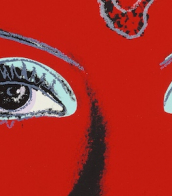

Roy Fox Lichtenstein, an American icon of the Pop Art movement, is celebrated for his comic strip-inspired art. Born in 1923 in New York City, Lichtenstein's journey into the art world was marked by various phases, evolving from Cubism and Abstract Expressionism to the distinctive Pop Art style he is renowned for.
Roy Lichtenstein's artistic career gained momentum in the 1960s, a period during which he embraced the comic strip as his primary source of inspiration. His pioneering use of Ben-Day dots, a technique borrowed from commercial printing, became his signature style, bringing a new visual language to fine art. His approach transformed mundane subjects from popular culture into compelling fine art, challenging traditional notions of artistry.
Among his most notable works, "Drowning Girl" (1963), displayed at the Museum of Modern Art in New York, exemplifies his iconic style with its bold lines, vivid colors, and Ben-Day dots. This piece, along with others like "Look Mickey" and "Whaam!", played a critical role in establishing Pop Art as a major art movement, contrasting starkly with the Abstract Expressionism prevalent at the time.
Roy Lichtenstein's art was not just limited to canvas; he explored multiple media, showcasing his versatility. His shift to Pop Art marked a significant turn in his career, bringing him fame and controversy alike. His works, often based on comic strips and advertisements, were both a parody and homage to the mass-produced, consumerist culture of his time.
For art collectors and experts, Lichtenstein's works offer a fascinating glimpse into a transformative era in art history. His approach to Pop Art remains influential, and his works are celebrated worldwide for their innovative and provocative style.
Interested in staying updated on sales and auction events featuring Roy Lichtenstein's works? Sign up for our updates. We provide straightforward, no-nonsense information on the latest in art sales and auctions related to Lichtenstein.

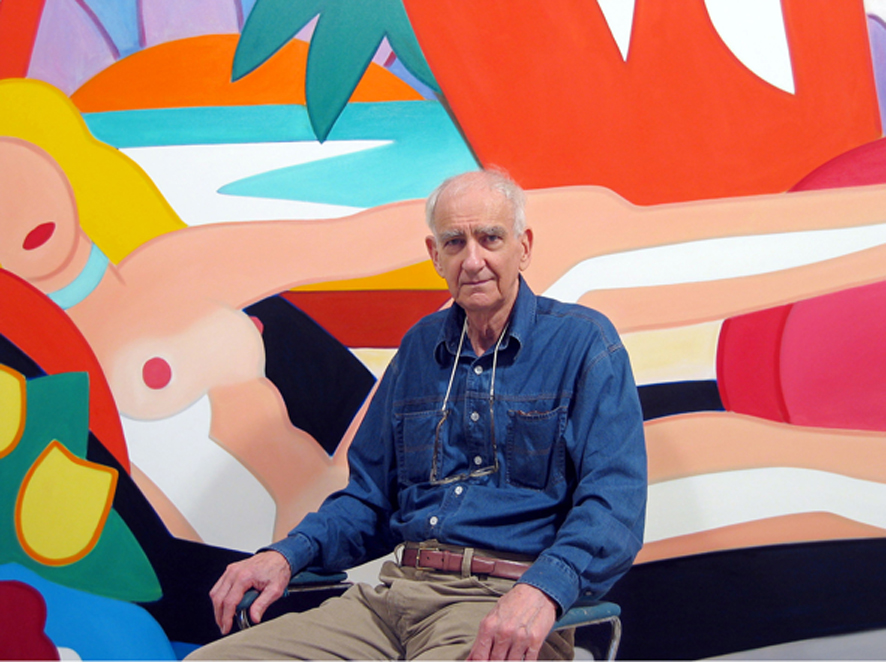
Tom Wesselmann was an American artist associated with the Pop Art movement who worked in painting, collage and sculpture.


Karl Otto Götz was a German artist, filmmaker, draughtsman, printmaker, writer and professor of art at the Kunstakademie Düsseldorf. He was one of the oldest living and active artists older than 100 years of age and is best remembered for his explosive and complex abstract forms. His powerful, surrealist-inspired works earned him international recognition in exhibitions like documenta II in 1959. Götz never confined himself to one specific style or artistic field. He also explored generated abstract forms through television art. Götz is one of the most important members of the German Art Informel movement.
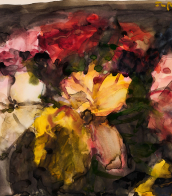
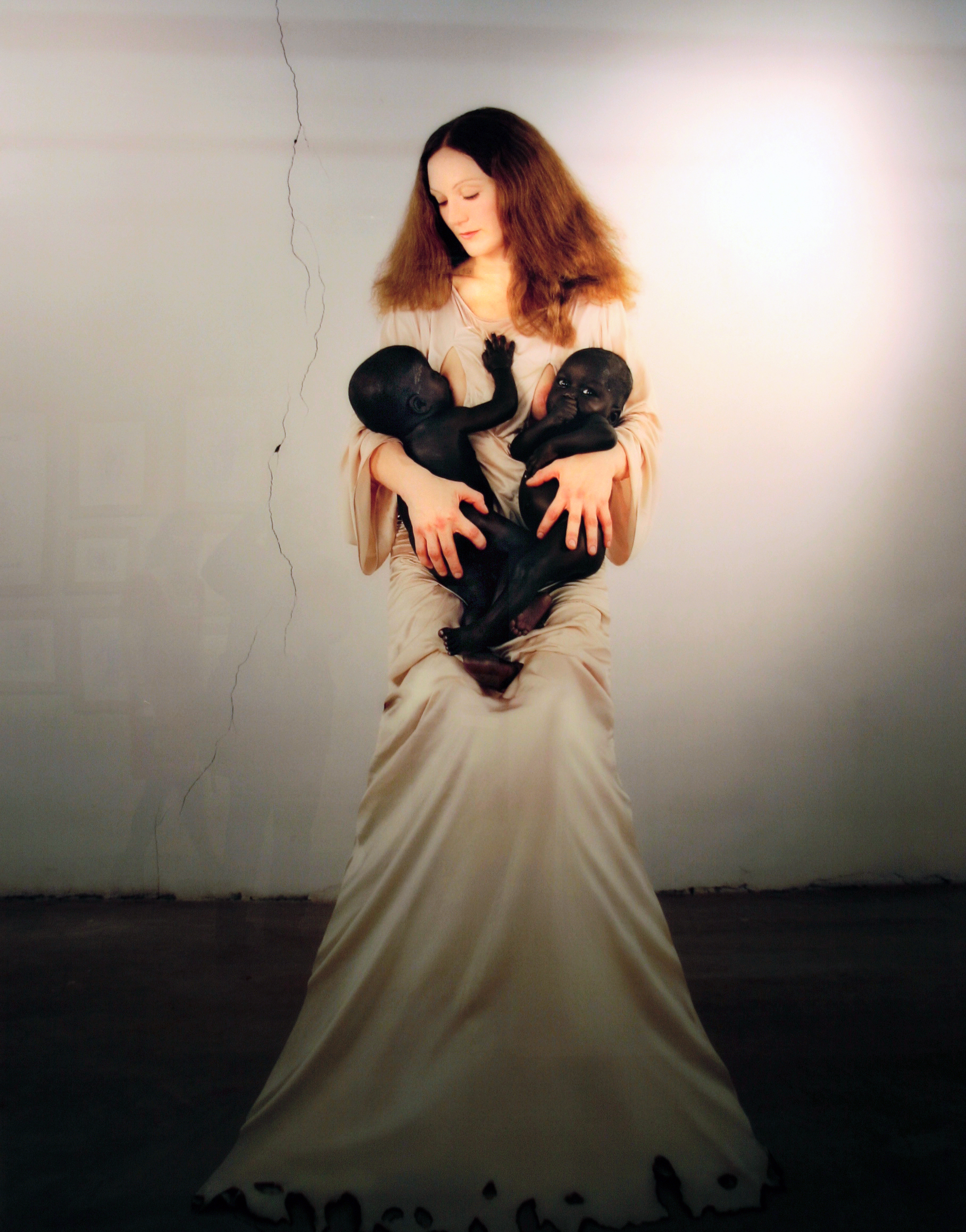
Vanessa Beecroft is an Italian-born American contemporary performance artist; she also works with photography, video art, sculpture, and painting. Many of her works have made use of professional models, sometimes in large numbers and sometimes naked or nearly so, to stage tableaux vivants. She works in the United States, and is based in Los Angeles as of 2009. Her early work was focused on gender and appeared to be autobiographical; her later work is focused on race. Starting in 2008 she began working with Kanye West on collaborations and commercial projects.
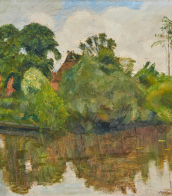
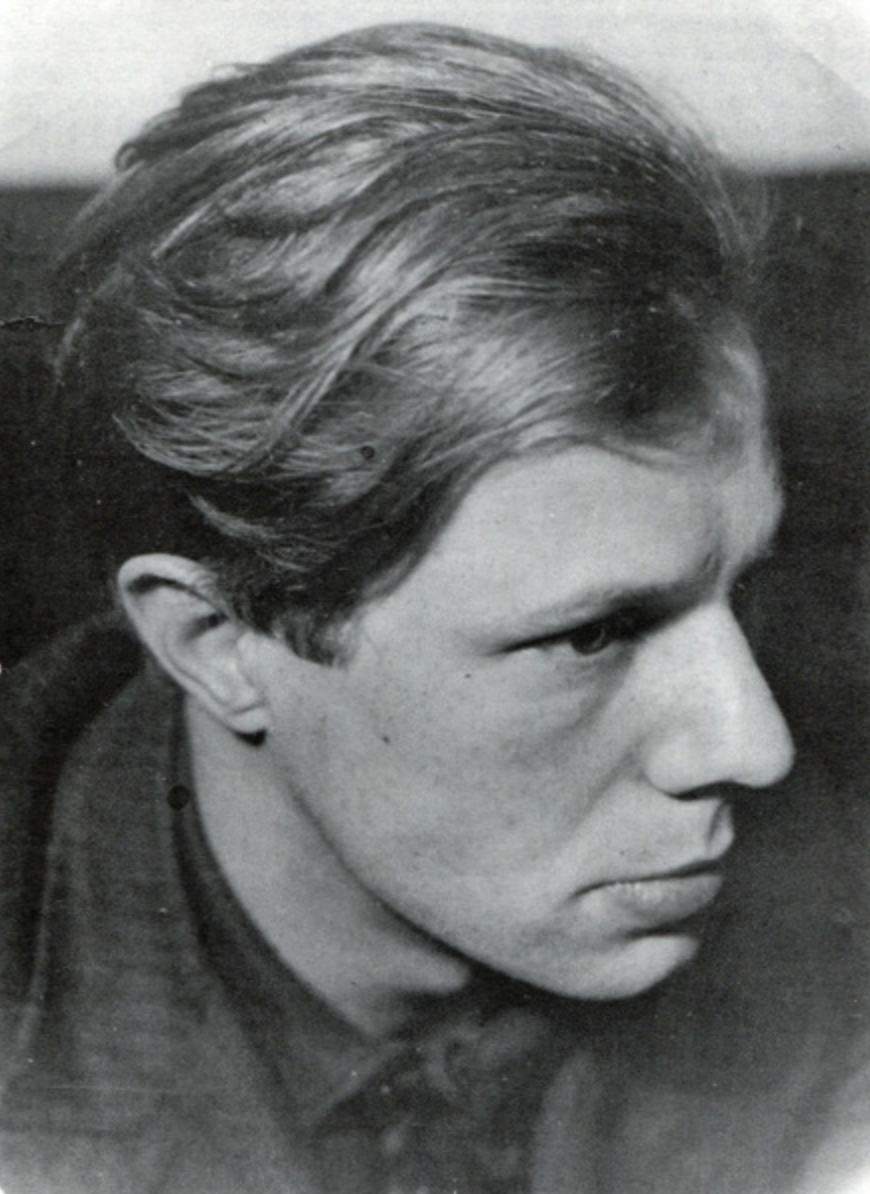
Otto Coenen was a German expressionist painter, graphic artist and illustrator.
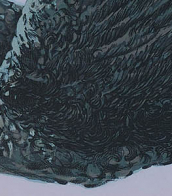
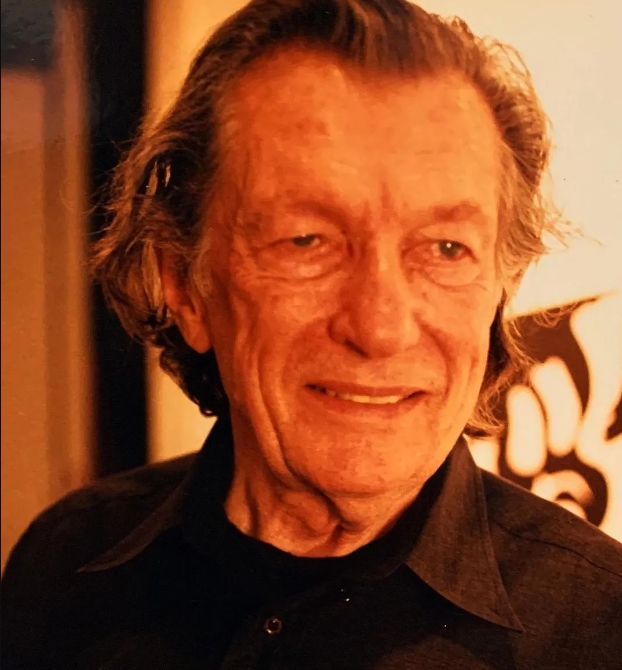
John Wesley was an American painter, known for idiosyncratic figurative works of eros and humor, rendered in a precise, hard-edged, deadpan style. Wesley's art largely remained true to artistic premises that he established in the 1960s: a comic-strip style of flat shapes, delicate black outline, a limited matte palette of saturated colors, and elegant, pared-down compositions. His characteristic subjects included cavorting nymphs, nudes, infants and animals, pastoral and historical scenes, and 1950s comic strip characters in humorously blasphemous, ambiguous scenarios of forbidden desire, rage or despair.


Sigmar Polke was a German painter and photographer.
Polke experimented with a wide range of styles, subject matters and materials. In the 1970s, he concentrated on photography, returning to paint in the 1980s, when he produced abstract works created by chance through chemical reactions between paint and other products. In the last 20 years of his life, he produced paintings focused on historical events and perceptions of them.
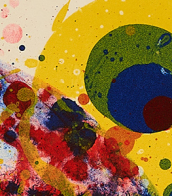

Karl Otto Götz was a German artist, filmmaker, draughtsman, printmaker, writer and professor of art at the Kunstakademie Düsseldorf. He was one of the oldest living and active artists older than 100 years of age and is best remembered for his explosive and complex abstract forms. His powerful, surrealist-inspired works earned him international recognition in exhibitions like documenta II in 1959. Götz never confined himself to one specific style or artistic field. He also explored generated abstract forms through television art. Götz is one of the most important members of the German Art Informel movement.

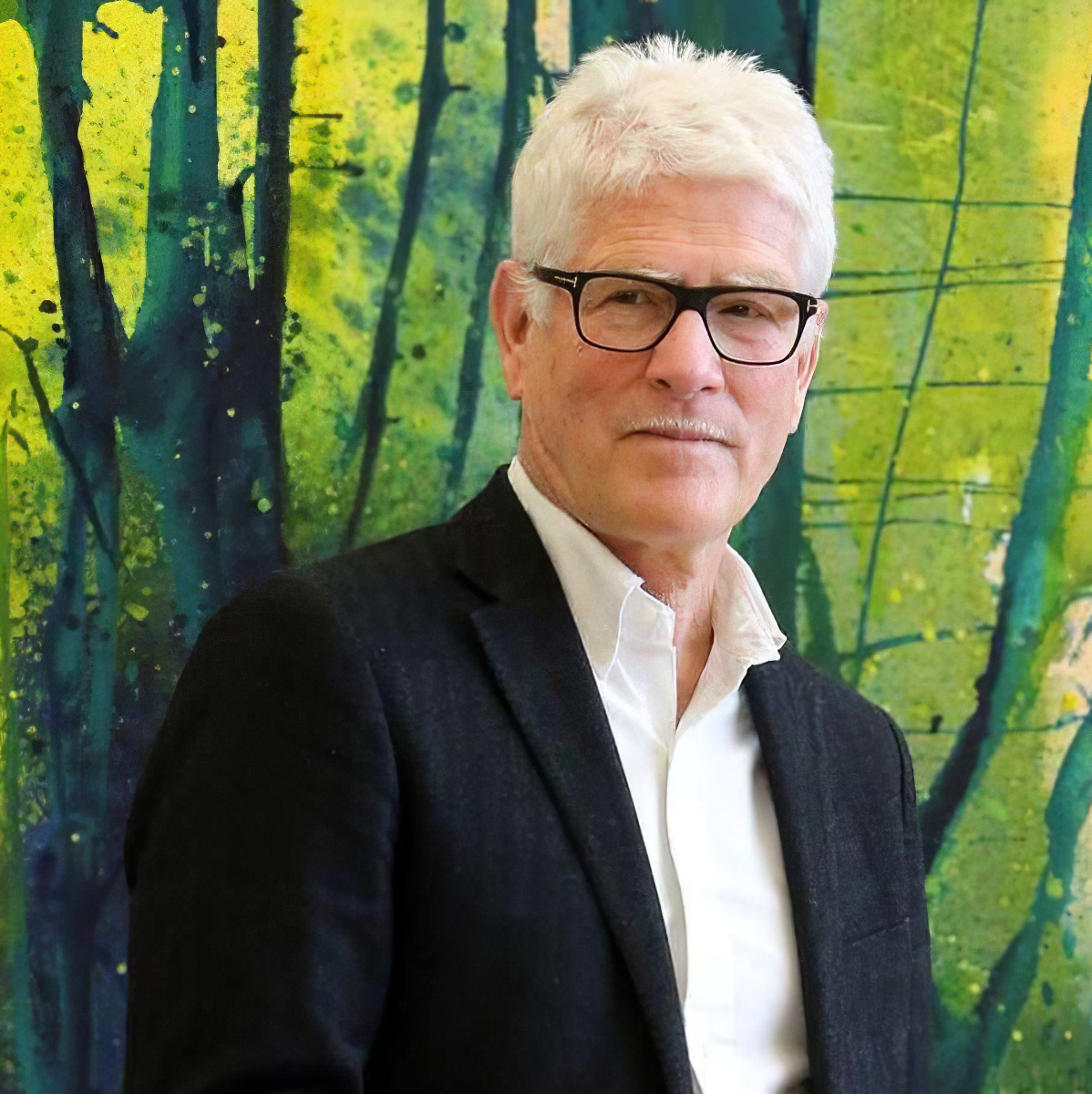
Bernd Zimmer is a Neue Wilden contemporary German artist.

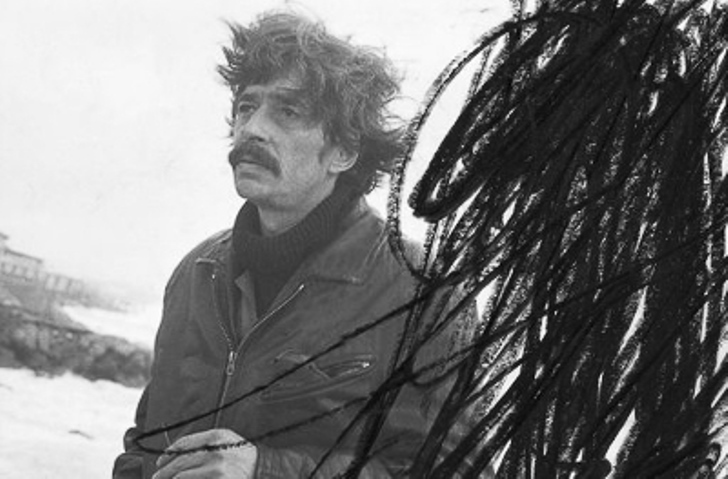
Walter Stöhrer is a German painter and graphic artist, a representative of gesture-figure painting.
He studied painting at the Academy of Arts in Karlsruhe and was a member of the Academy of Arts in Berlin.
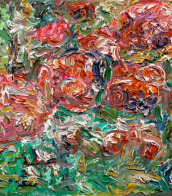
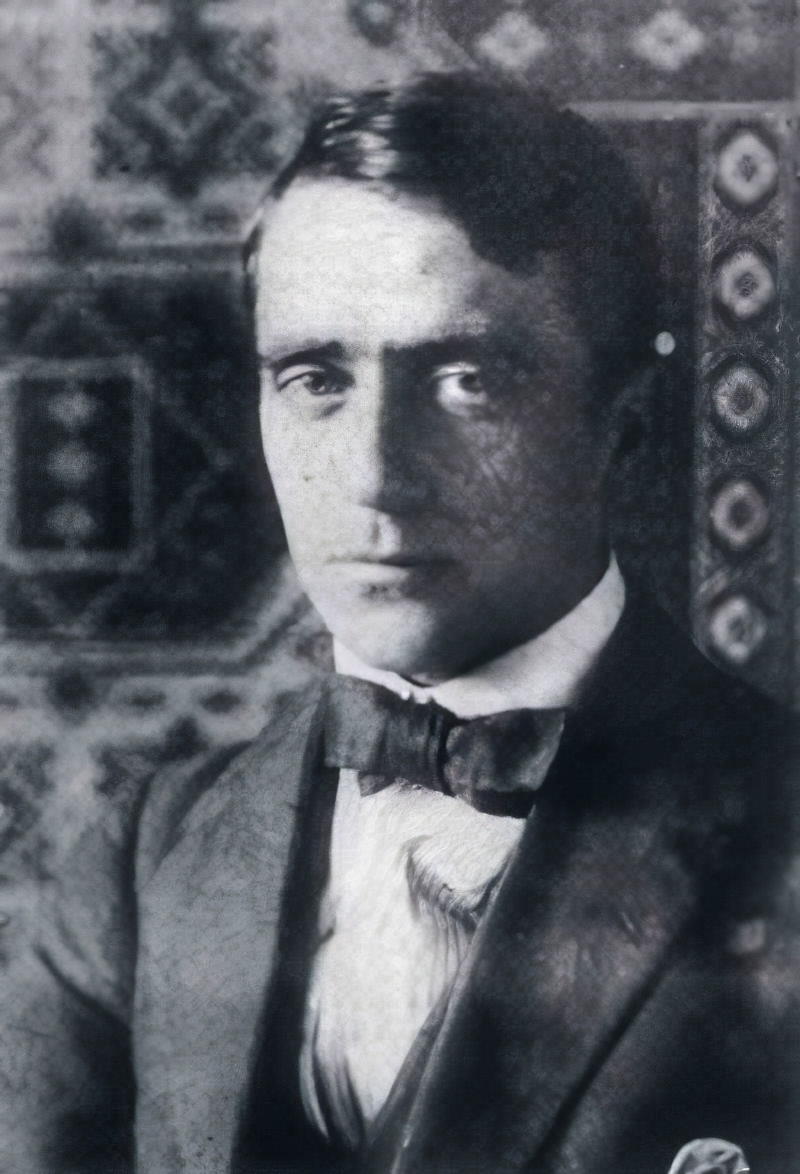
Carlo Mense was a German artist of the twentieth century. He is known as a painter and graphic artist, a representative of Rhenish Expressionism and New Materialism.
Mense was a member of artists' associations such as the Cologne Secession, Gereon Club, Young Rhine, and November. He actively participated in Expressionist exhibitions. Creating graphic works for the magazines "Action" and "Sturm", he became known for his artistic style. In 1937, the Nazis destroyed 37 of his works, categorizing them as "degenerate art." Mense left a significant mark on twentieth-century German painting with his expressive and evocative works.

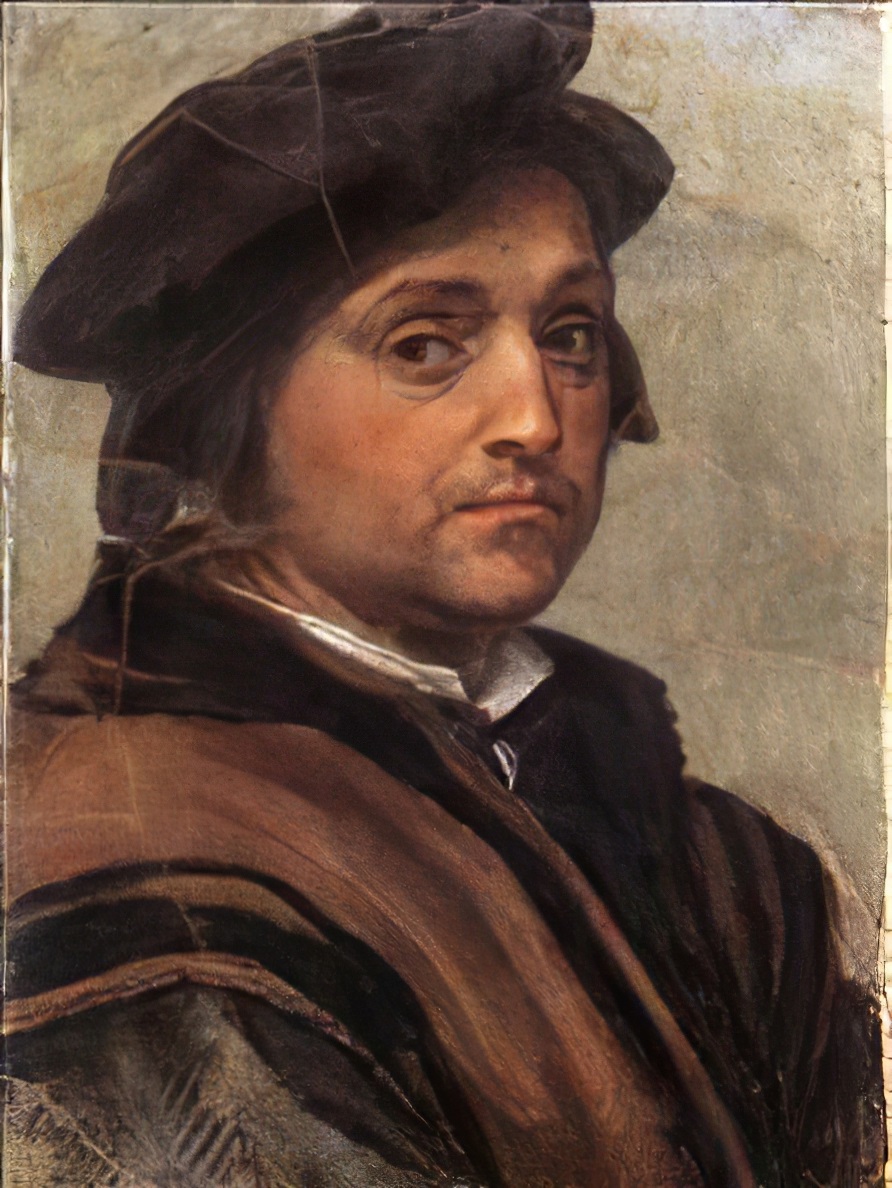
Agostino Tassi was an Italian painter renowned for his expertise in creating illusionistic architectural decorations and landscapes. His work adorned several Roman palaces, including the Quirinale and the Doria Pamphili. Notably, Tassi had a significant influence on the Dutch artist Leonaert Bramer through his night scenes.
Agostino Tassi's life, however, is often overshadowed by his criminal actions. In 1612, he was convicted of raping Artemisia Gentileschi, a notable Italian Baroque painter. This event has had a lasting impact on feminist perspectives of Gentileschi's works and life. Despite his artistic talents, Tassi's personal life was marred by legal troubles, including accusations of raping his sister-in-law and being suspected of hiring bandits to kill one of his wives.
His teaching career included mentoring Claude Lorrain and Viviano Codazzi, indicating his significance in the art community of his time. Tassi's artistic legacy includes frescoes and some canvas works, such as "The Embarkation of a Queen" and "The Coral Fishers".
For those interested in art history, particularly the Baroque period and its complex interplay of artistic brilliance and personal turmoil, Tassi's life and works provide a fascinating study. To stay updated on exhibitions, sales, and scholarly research related to Agostino Tassi, consider subscribing to updates focused on this intriguing figure from art history. This subscription will ensure you're informed about the latest discoveries and opportunities to engage with Tassi's legacy in the context of art and culture.

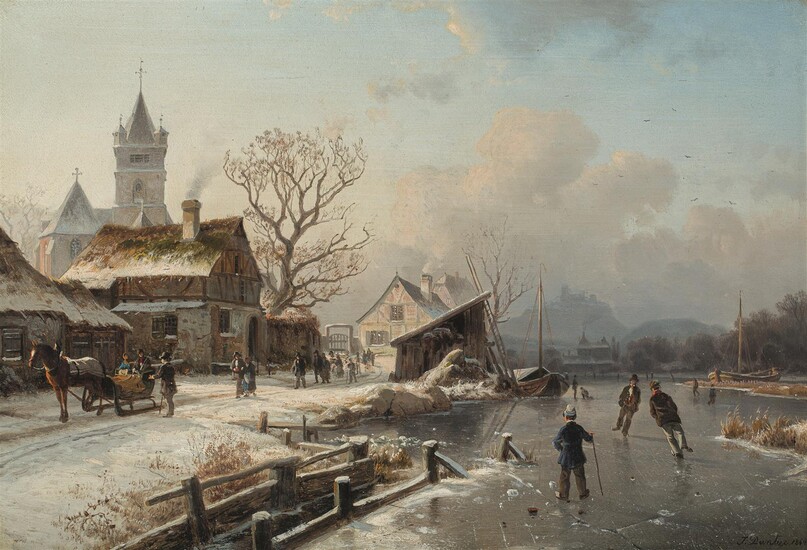
Johannes Bartholomäus Duntze was a German landscape painter.

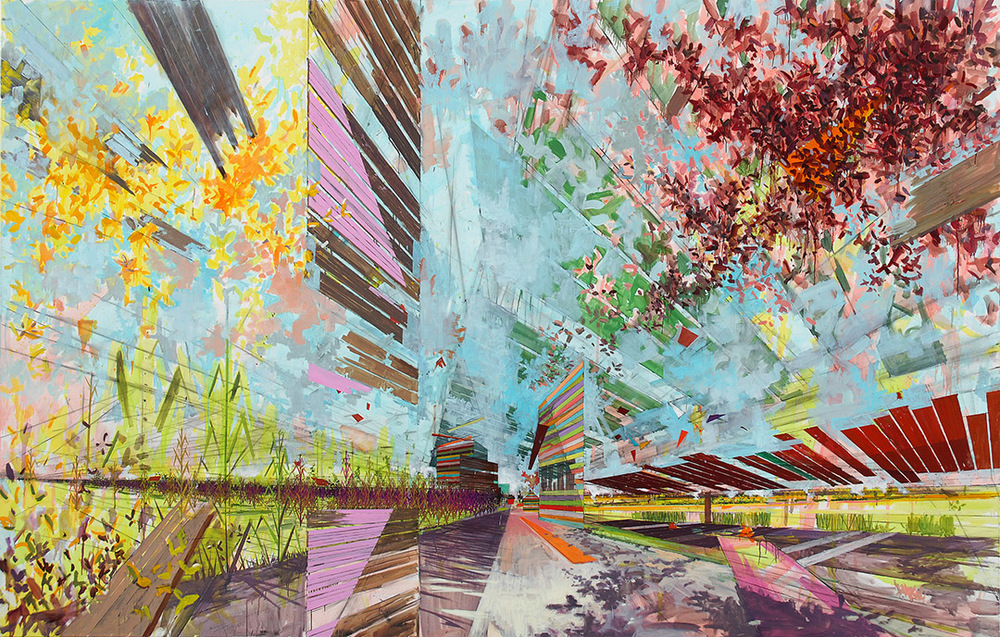
David Schnell is a celebrated figure in contemporary art, well-known for his dynamic and immersive landscapes that blur the lines between natural and constructed environments. Educated at the Hochschule für Grafik und Buchkunst in Leipzig, Schnell's artistry flourished under the tutelage of Arno Rink, aligning him with the influential New Leipzig School. This affiliation situates him among the vanguards of a movement that revitalizes painting with fresh perspectives and conceptual depth.
David Schnell's works are characterized by their deep perspective and a unique blend of culture and nature, often incorporating elements that evoke a sense of fluidity and transformation within his landscapes. This approach not only invites viewers to become part of the artwork but also challenges them to contemplate the dualities of construction and destruction within the landscapes presented. His exhibitions, such as "Hover" in collaboration with the Mönchehaus Museum für Moderne Kunst and Museo de Arte de Ponce, showcase his ability to transform landscapes into grand art,.
Recent works and exhibitions, including his pieces "Ton" (2018) and "Kalender" (2017/2021), further exemplify David Schnell's mastery in painting, demonstrating his continuous exploration of space, time, and perception through large-scale oil on canvas. His artworks, such as "Schleuse" (2022), "Quartier" (2017), and "Abschied" (2023), fetch significant appreciation in the art market, reflecting both his critical acclaim and commercial success.
For collectors and experts in art and antiques, David Schnell represents a compelling convergence of traditional painting techniques and contemporary thematic exploration. His work not only honors the legacy of landscape painting but also propels it into the contemporary discourse with innovation and introspection.
Stay updated on David Schnell's latest exhibitions, artworks, and sales by subscribing to updates from galleries and art platforms that feature his work. This subscription ensures that enthusiasts are always informed about the latest developments and opportunities related to Schnell's evolving body of work.
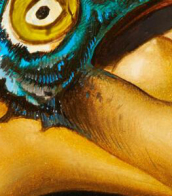
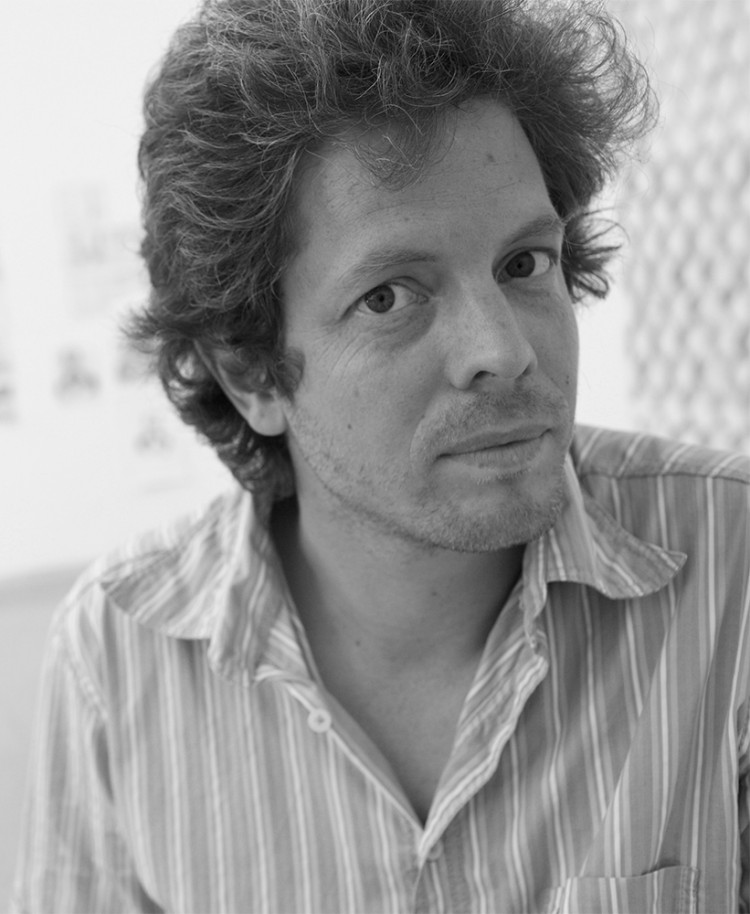
Matthias Weischer is a German artist and painter.
He graduated from the School of Graphic Arts and Book Art in Leipzig and also lives and works in Leipzig. Weischer's imaginative, incompatible interiors have become his calling card.
The never-populated, deserted rooms in his paintings create psychological tension and inexplicable anxiety in the viewer.

